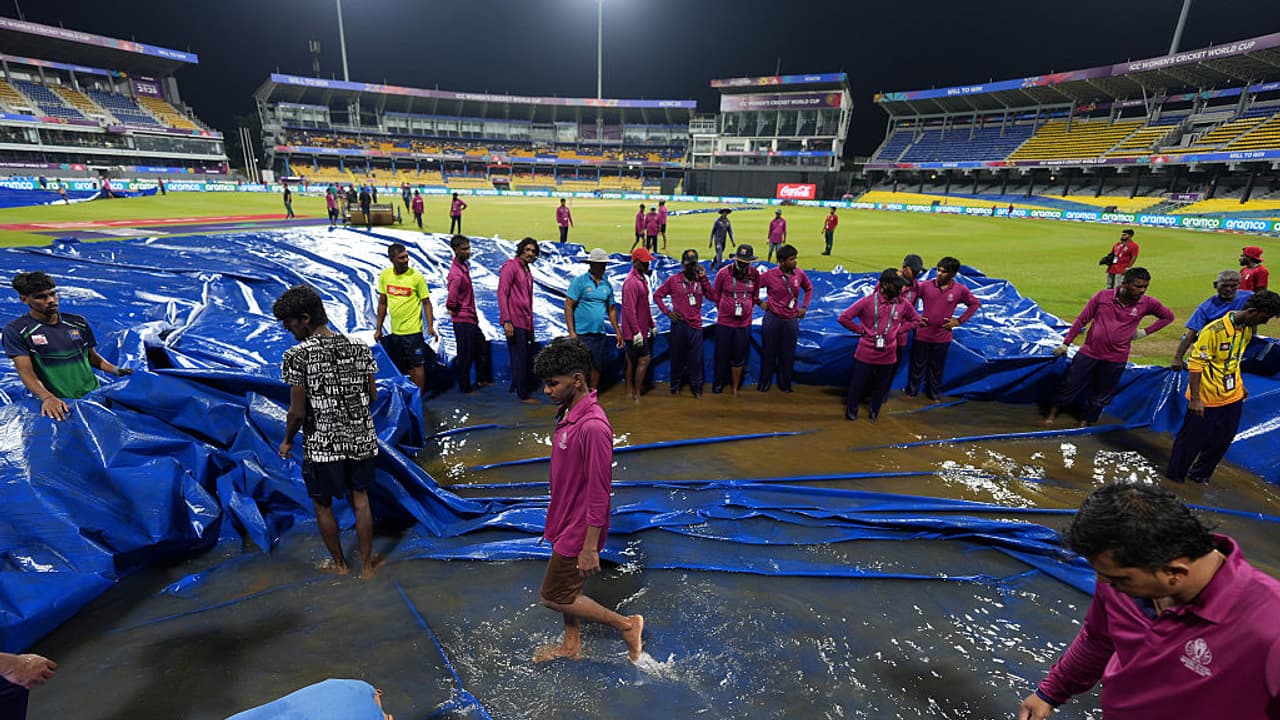During the Women’s Cricket World Cup in Sri Lanka, Colombo matches have faced frequent rain interruptions. Ground staff swiftly cover and uncover pitches, outperforming machines in speed and efficiency. But why are they not using super soppers?
As the Women’s Cricket World Cup unfolds in Sri Lanka, a familiar sight has become part of the tournament experience. Ground staff rapidly positioning themselves along the boundary line at the first hint of rain. The commentators for the England vs Pakistan on Wednesday, October 15 Match observed that the staff was miffed the umpires were not asking the players to come off amid the drizzle. Behind this well-choreographed response lies an intricate manual operation that keeps matches on schedule during the island nation’s rainy season. Unlike many international venues that rely on mechanized systems, Sri Lankan grounds depend entirely on human coordination and effort. But why?
Speed and Efficiency
At venues like the R Premadasa Stadium hosting World Cup matches, the ground staff can cover the entire playing surface in 30 to 45 minutes under normal conditions. When heavy winds accompany rainfall – a common occurrence in coastal Sri Lanka – the team completes the task even faster, in just 15 to 20 minutes. The uncovering process follows an equally systematic approach. Staff carefully drain water from one cover to the next, directing it toward the outer perimeter and eventually into drainage systems. This methodical technique actually saves approximately one hour compared to using mechanical super-soppers.
While super-soppers are standard equipment at many international cricket venues, they come with limitations that make them less efficient in Sri Lankan conditions. These machines cannot operate at high speeds, and their water tanks require frequent emptying during operation, creating delays that manual methods avoid. The covers themselves are engineered to withstand Sri Lanka’s coastal winds that typically accompany rain. Each cover measures approximately 100 feet by 100 feet and costs between Rs 4 lakhs to Rs 6 lakhs. The R Premadasa Stadium alone requires 26 such covers to protect the entire field. Unlike grounds in Australia and New Zealand, where soil composition and advanced drainage infrastructure minimize water accumulation, Sri Lankan venues face different challenges. The scheduling of home cricket during the monsoon season makes comprehensive field protection essential for tournament continuity.
Should The Practice Continue?
The manual covering system, refined over years of hosting international cricket during challenging weather conditions, represents Sri Lanka’s adaptation to its unique climate while maintaining world-class playing standards for the premier women’s cricket tournament. However, almost all matches in Colombo in the tournament have been interrupted by rain during this tournament, putting the manual system to the ultimate test.
The persistent rainfall raises questions about whether additional technological support, such as mechanized super-soppers or advanced drainage solutions, could further reduce interruptions while preserving the human expertise that has served the tournament so well. For now, Colombo’s ground staff remain the unsung heroes of the Women’s Cricket World Cup, demonstrating that experience, coordination, and sheer manpower are invaluable when nature refuses to cooperate.
